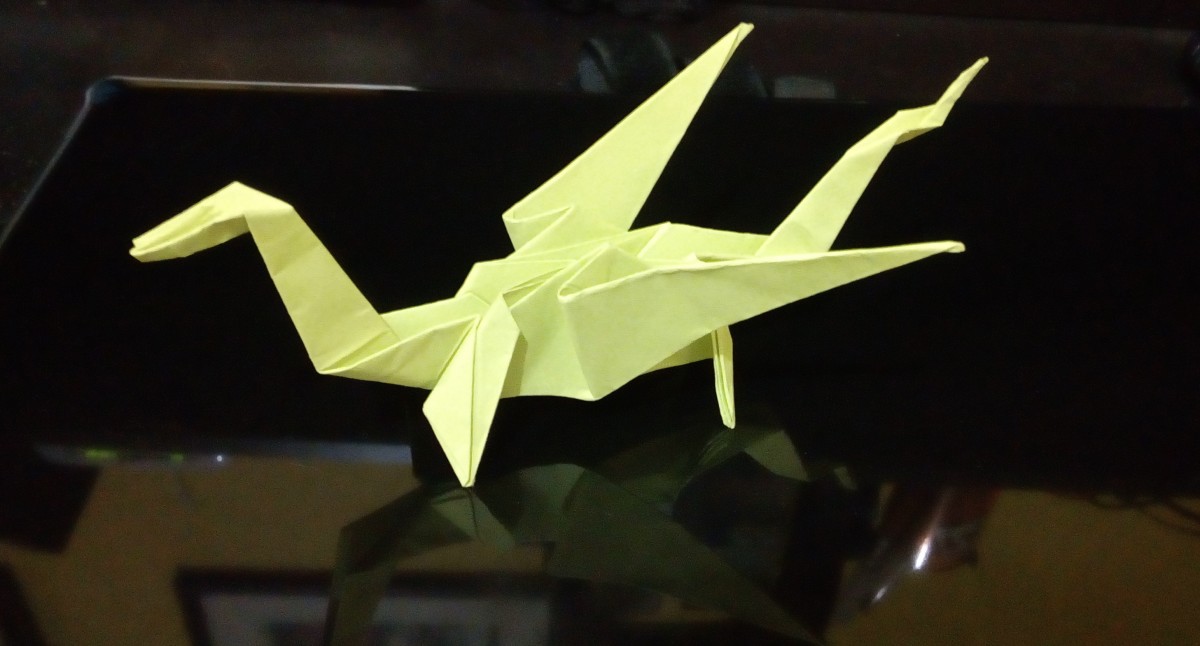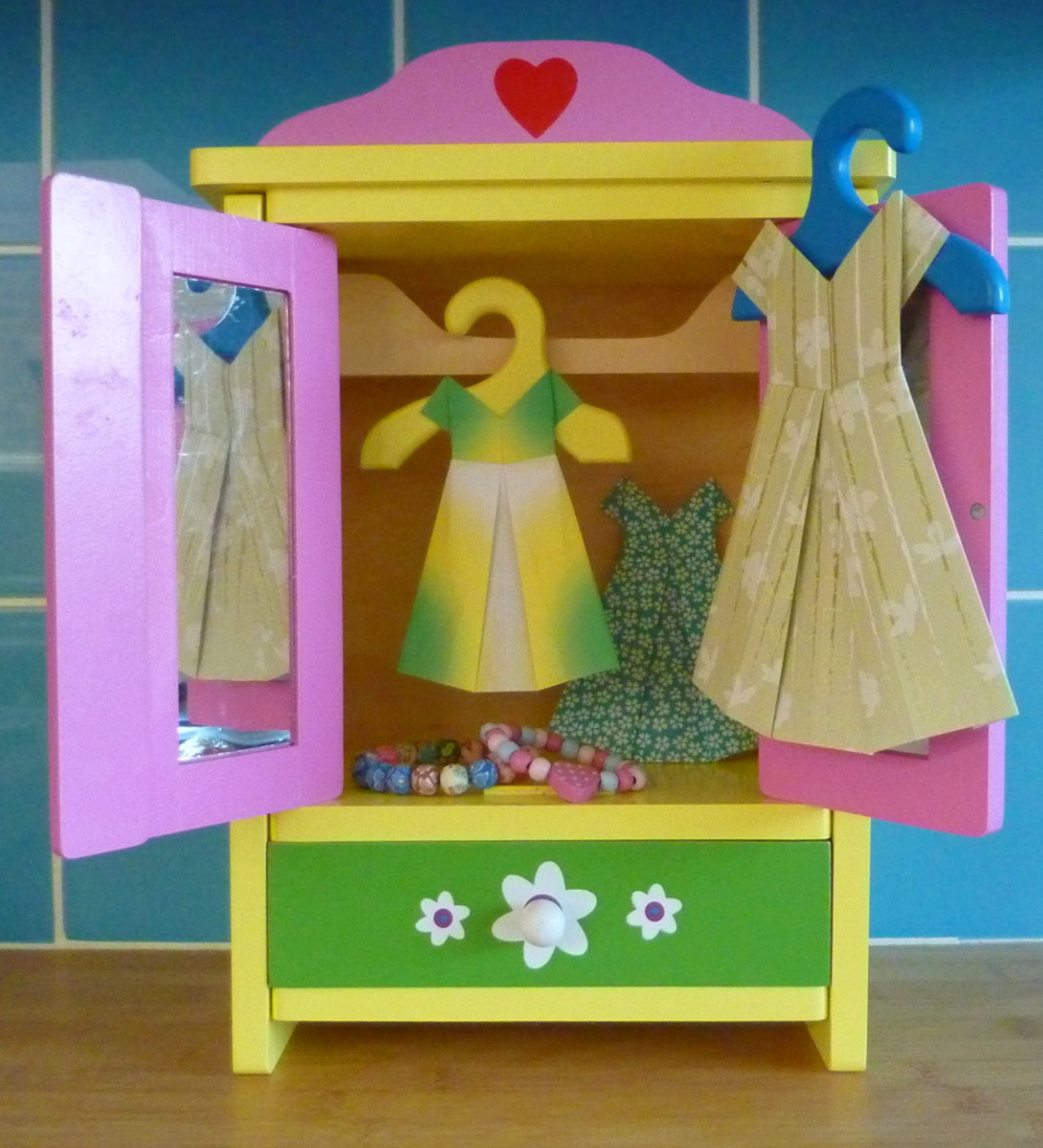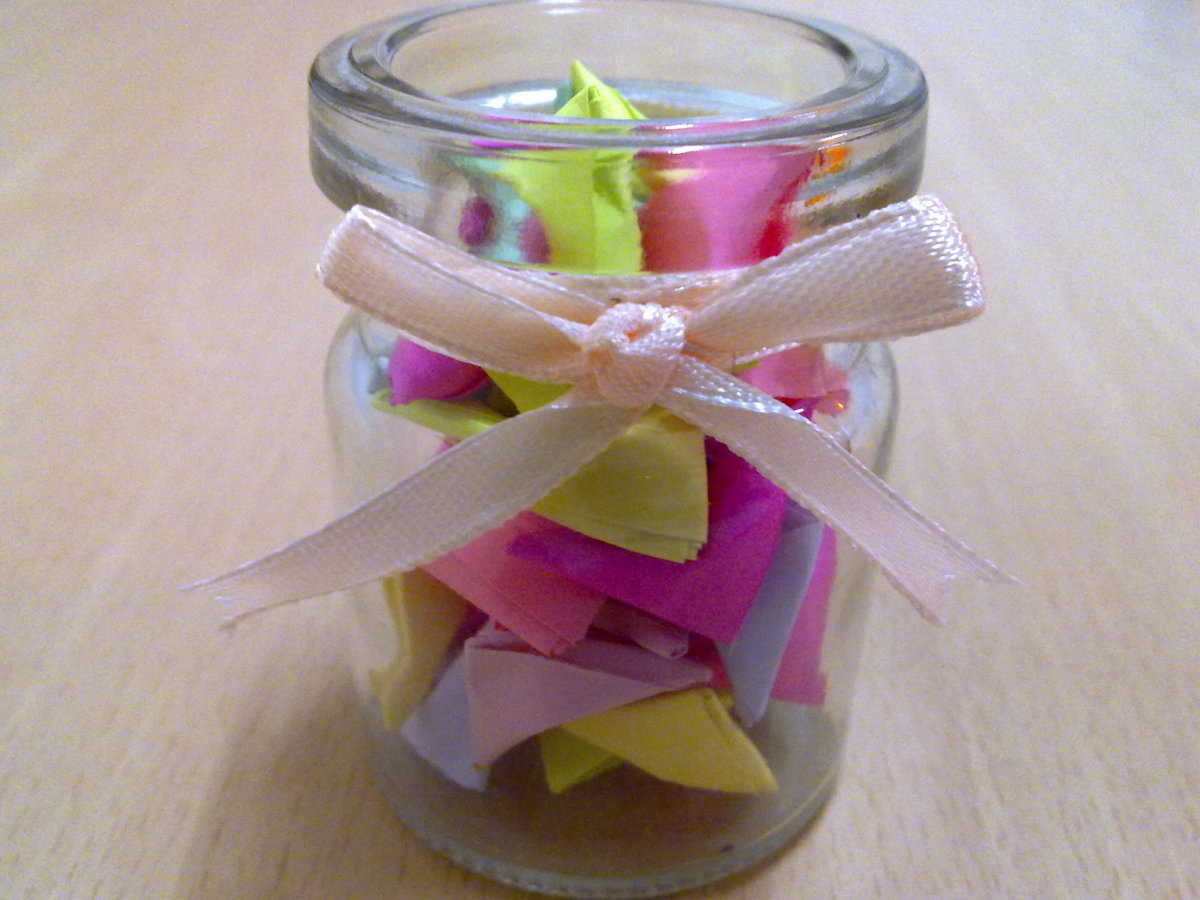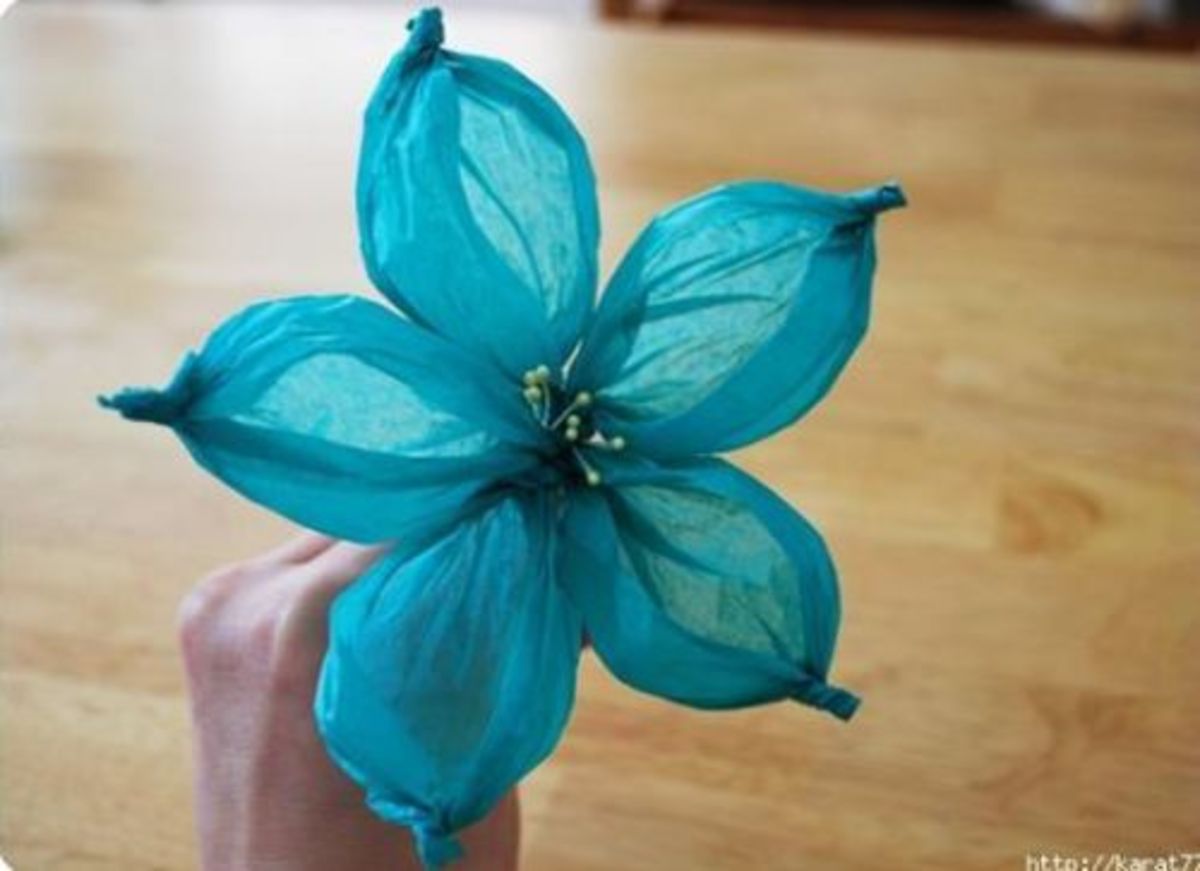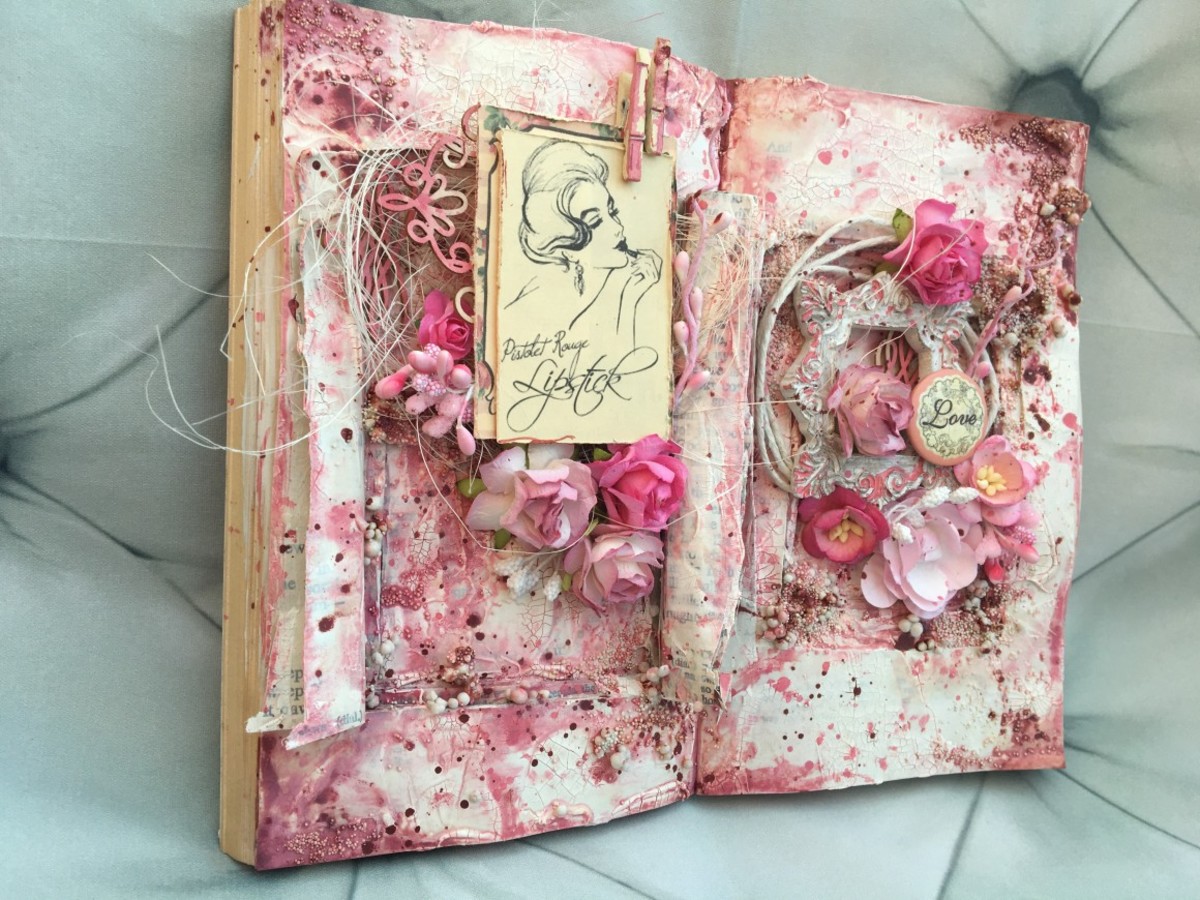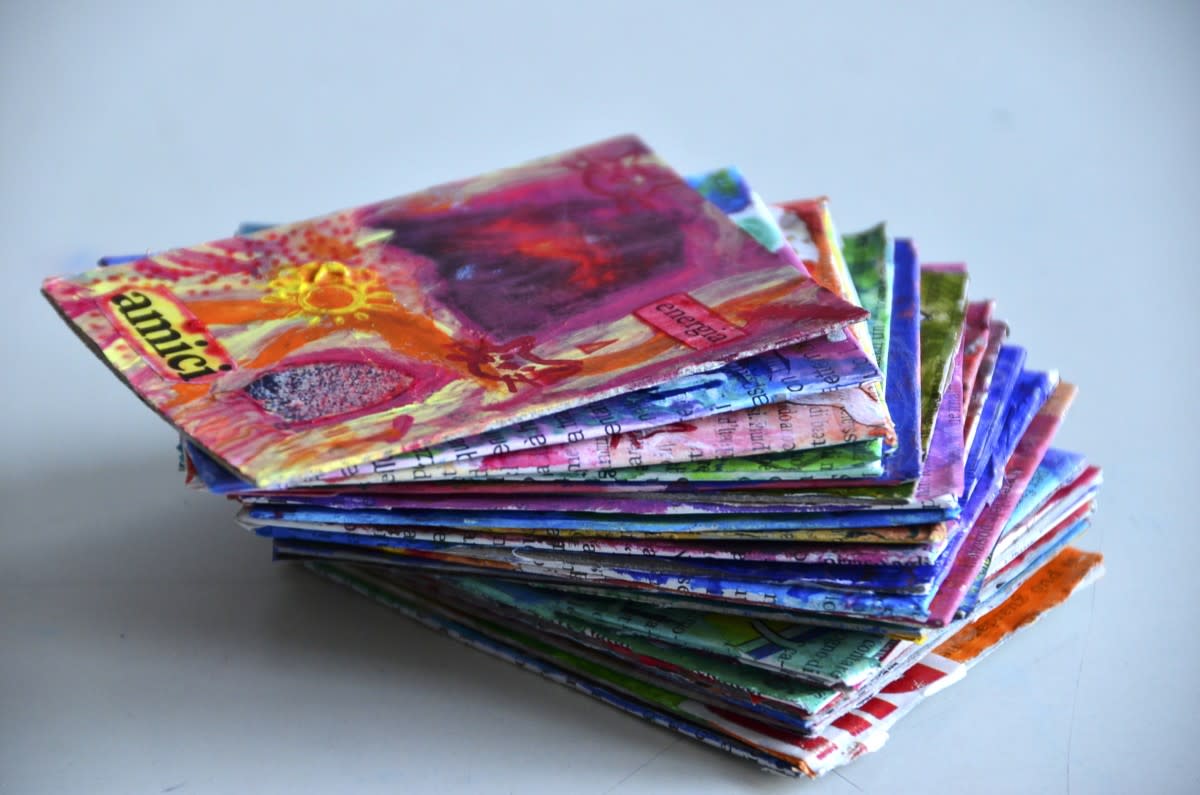- HubPages»
- Arts and Design»
- Crafts & Handiwork»
- Paper Creations
Nano-origami by Anja Markiewicz
Now I want to talk something light about origami. I think many of us know this craft. Based on word, origami came from “ori” and “kami”. Ori means “folding” and Kami means “paper”. Origami is kind of Japanese art of paper folding. The common materials used are paper or cloth which is usually rectangular. We can easily find this in book store which sold origami paper with various color. Of course, we need kind of creativity to make a beautiful origami. We may search from the web or video around the internet to know how to make origami start from basic, intermediate until the expert. Learning origami can be started from basic training with simple forms.
Dragon (37mm)
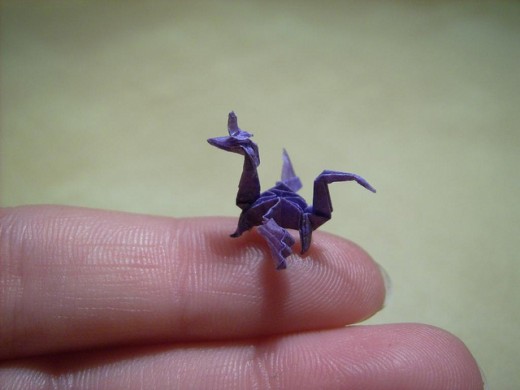
A little history of origami
Actually, the exact origin of the art of origami is unknown. But from trusted information, this craft begin in the 17th century AD and become more popular outside of Japan in the mid-1900s. Other information said that origami is believed to be originated since the paper introduced in the first century in ancient China in 105 AD by Ts'ai Lun and brought to Japan by Buddhist monks in the sixth century A.D. The example of origami that comes from China is a barge (junk) and the box. It’s confusing whether origami first started in China or Japan. But, no one denies that Japan developed origami to a very high art form.
Traditional Japanese origami has been introduced since the Edo era (1603–1867). Most of origami traditions were passed on by oral instruction. The oldest document about Japanese origami surfaced in 1797. This document was written by the Senbazuru Orikata with the title "How to Fold One Thousand Cranes". The first monumental of original modern origami came from the master Yoshizawa Akira, in the 1950's. Other paper folding art was introduced around 1835 by Friedrich Froebel for the kindergarten movement in Germany. Paper folding art was become popular as children hobby in the England of Queen Victoria. We can see this from a couple of John Tunnel’s illustrations for Through the Looking Glass by Lewis Carroll, including two simple origami hats.
Horse
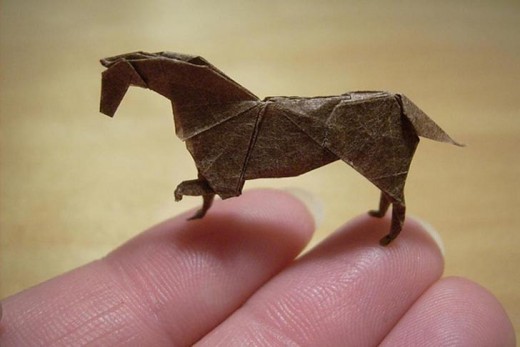
More about origami
Origami became popular among Japanese people today, especially by using local Japanese paper called Washi. But now, it’s transform into a modern art form. I’ll give a little review about Washi. It’s a paper made by fibres from the mitsumata shrub (we usually called this Edgeworthia papyrifera) or the bark of the gampi tree. Washi also can be used from rice, bamboo, wheat, or hemp. With the character tougher than ordinary paper which is made by wood pulp.
We can find various shape produce by origami, like: origami based folds, animals, airplanes, birds, boxes and containers, cranes, flowers, stars, toys, clothes, wedding, Dollar bill origami, napkin folding origami, etc. What do we want from a sheet of paper? We just need a single idea or complicated idea to transform a flat sheet of paper into a finished 3d sculpture through folding. So, we don’t need cuts or glue here. If we use these techniques (cuts or glue) are not considered to be origami. Just to remind us again, the famous model is probably the Japanese paper crane. Generally, we usually start with a square sheet of paper whose sides may be different colors and folded in accordance with the shape that we want. For the crane model we can use normal copy paper with weights about 70–90 g/m2.
Origami Class
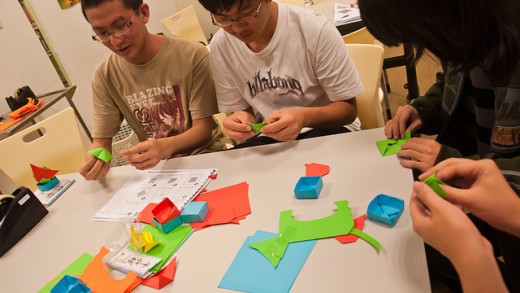
Technique, types and origami tools
How about the technique? There are many terms in the art of origami folding, like: pleats, squash folds, sinks, reverse folds, and basic folds (valley and mountain folds). We can find many types of origami, like: action origami, modular origami, wet-folding origami, pureland origami, Origami tessellations, and kirigami. The last type is a Japanese term for paper cutting. Maybe if you read the whole of this hub you can find a statement about "If we use these techniques (cuts or glue) are not considered to be origami". But, cutting technique was often used in traditional Japanese origami. But for most of origami the using of cuts are unnecessary. Sometime we need others tools to created origami with a complicated shape, like: paper clips (as extra pairs of fingers), tweezers (to make small folds), a ruler and ballpoint embosser (to score the creases).
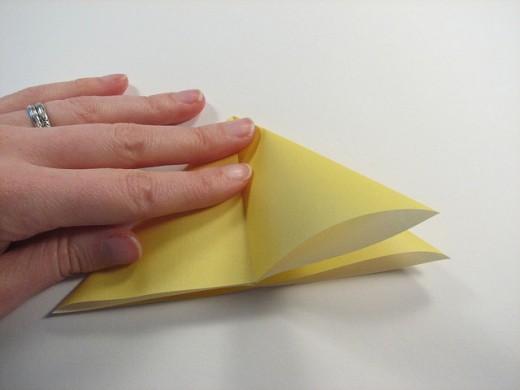
Up close and personal with "Anja Markiewicz"
From this hub, I’ll share something unique from origami. What makes this origami looks special and unique? This is amazing origami in an extraordinary scale. With various shapes, like: dragons, cranes, flowers, snowflakes, dog, pig, chameleon, cat, geckos, and all sorts of insects. For example: the crane was formed from a 9mm sheet of paper, the elephant from a 37 mm sheet of paper, butterfly from a 9 mm sheet of paper, baby dragon from a 18 mm sheet of paper and snowflakes from a 38 mm sheet of paper. We can find this art work from German artist, namely Anja Markiewicz. She is very beautiful and talented as well.
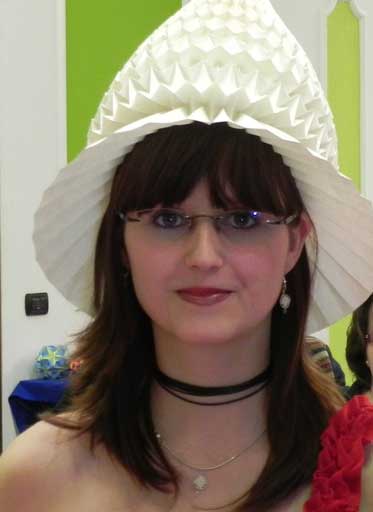
She folds tiny pieces of paper (from the pictures, it's smaller than inch long) into incredible nano-origami creatures. She uses a simple tool, like toothpick. With her skilled hands and full of patience, this artist present a skillful paper art and all of them have the most amazing shape. She said that she cut the paper to make it smaller and it was still able to fold it. Her friend tried to fold this paper, but couldn't do it. She started her hobby while bored at college and her masterpiece at that time is an origami ship with foil from a chocolate wrapper. It’s about five years ago. She started to fold the wrapper after she finished eating the chocolate. After that her passion was raised up and she bought very thin paper from a craft shop. She spent hours making this origami and need a break every two hours. Because to keep up her concentration levels. Her favorite is the yellow ball, it takes 10 hours to make. We can called this "nano-origami" or "miniature of origami".
Nano-origami collection by Anja Markiewicz
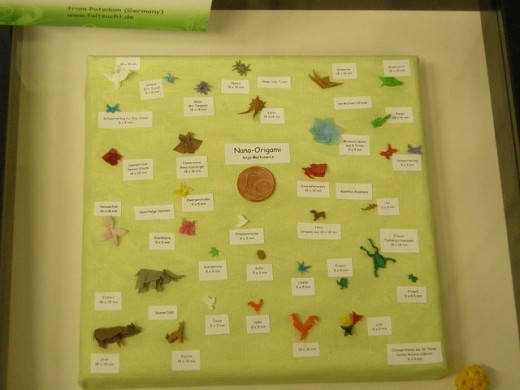
Dog (18mm)
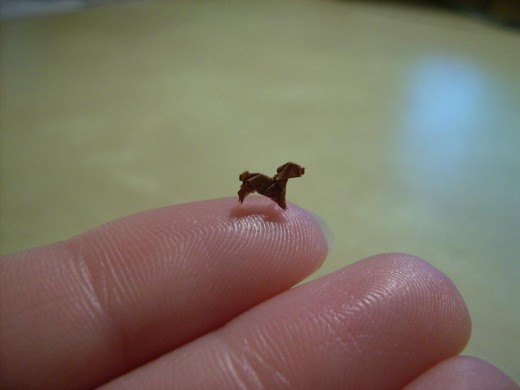
Butterly (9mm)
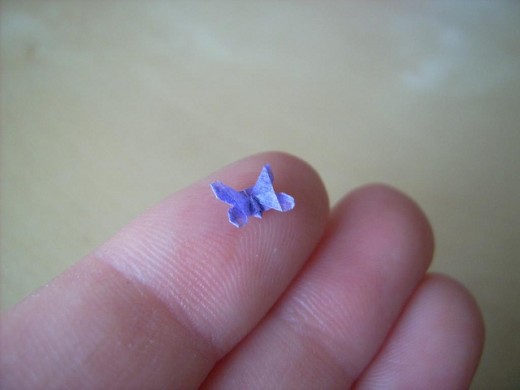
Rabbit (18mm)
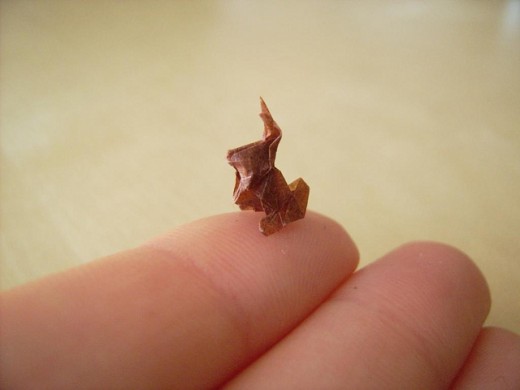
swan (18mm)
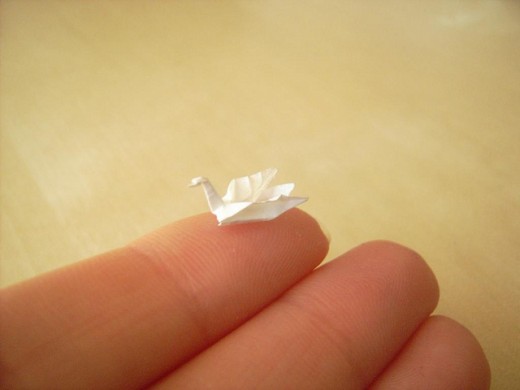
Elephant (18mm)
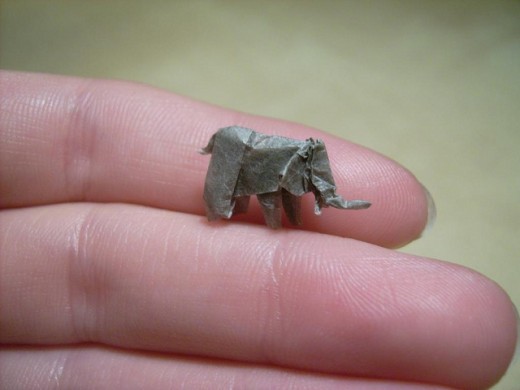
Snowflakes (39mm)
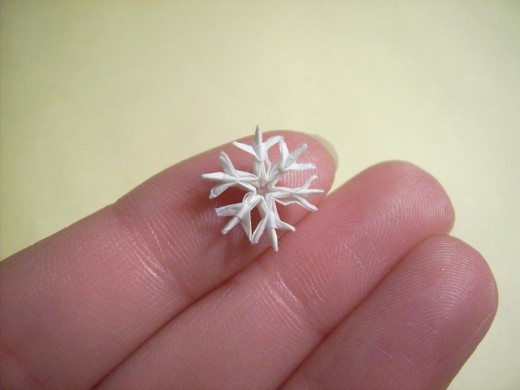
Crane (18mm)
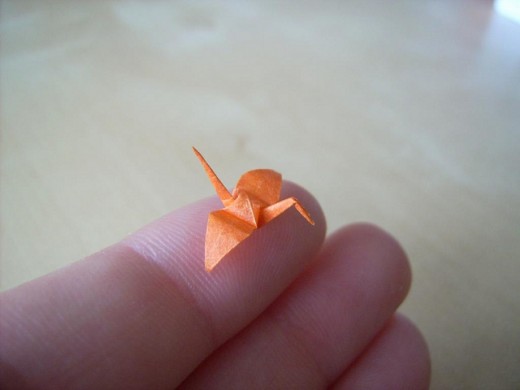
Frog
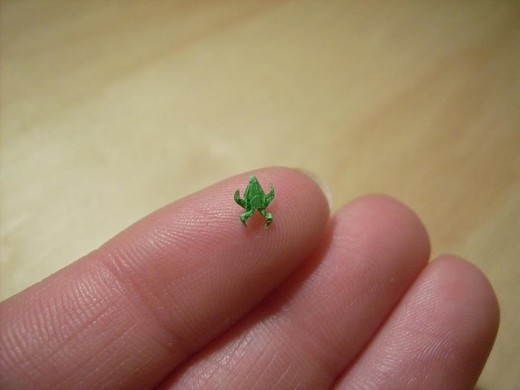
Anja created all these amazing nano-origami from her Postdam studio near Berlin. She has amazing precision and ethereal elegance. She uses the ancient Japanese technique origami. The result is her ability to replicate lily flower, classic crane in a Lilliputian scale. I heard that she is selling her art work key rings, mobile phone charms, and adorable necklaces with tiny prices as well. She had created about 500 folding art works. For further information, you can visit her website here. or further information yShe sells them for about £10 each on her website. I hope you enjoy all pictures and video through this hub.
Yellow Ball (9mm)
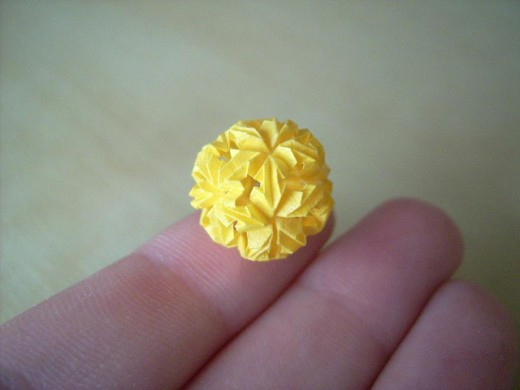
Coyote (18mm)
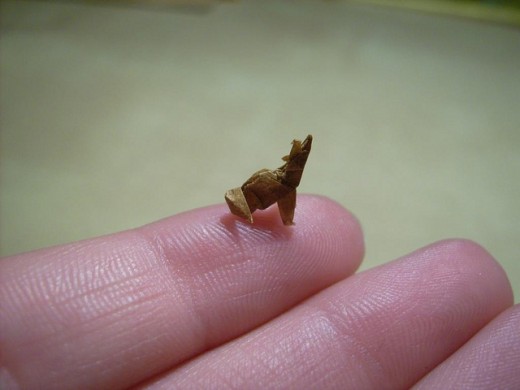
Bull (37mm)
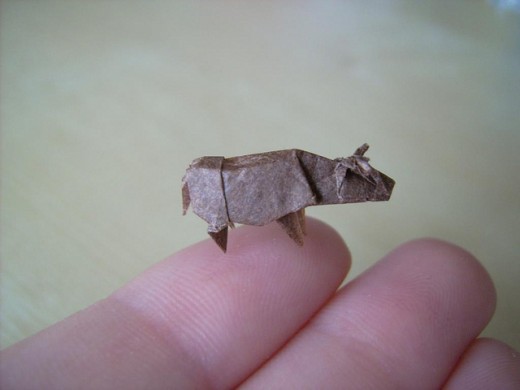
Cock (9mm)
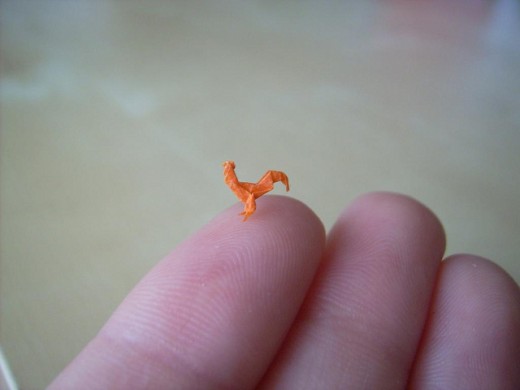
Flower
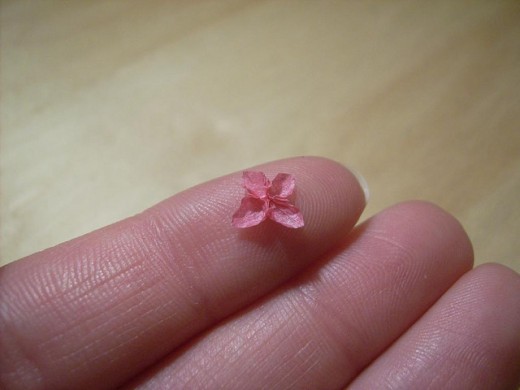
Owl
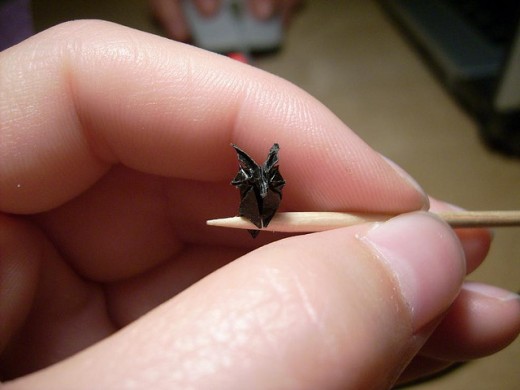
Origami in necklace
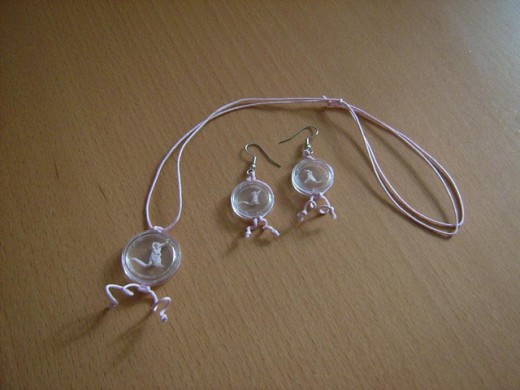
Bonus....Please enjoy the video below!
Interview with Anja Markiewicz
You can also read my hub about "miniature" :
-
Miniature Postal Service, The World's Smallest Letter
-
Willard Wigan, the man behind the smallest sculpture in the world
-
Miniature Books from the World's Smallest Library
-
Very Talented Person in Building Miniature
-
The Best City Miniature In The World
-
Miniatur Wunderland, The Largest Railroad Miniature

